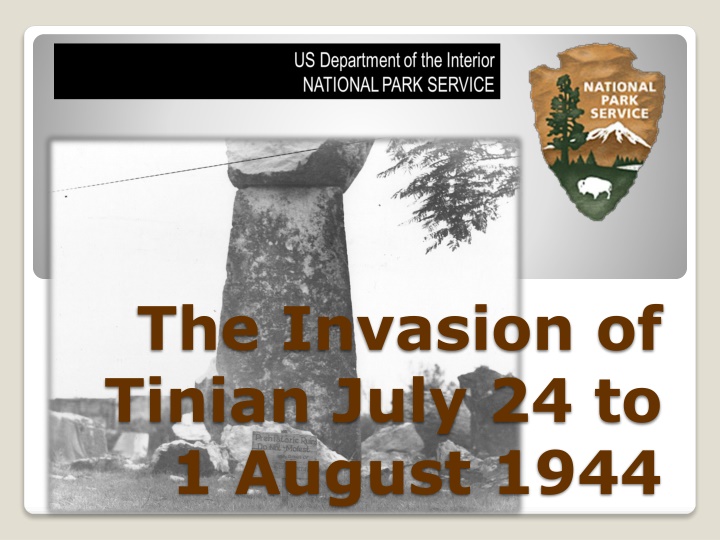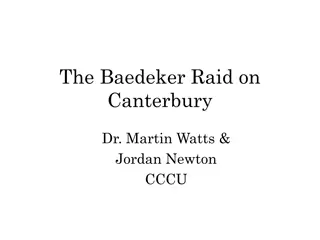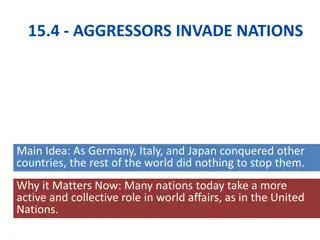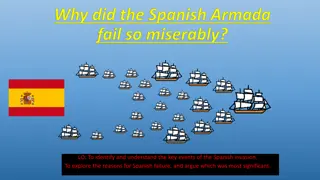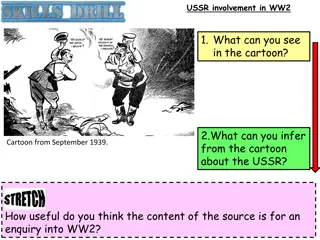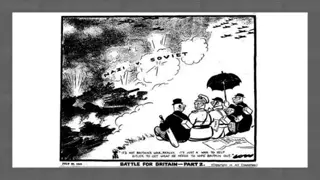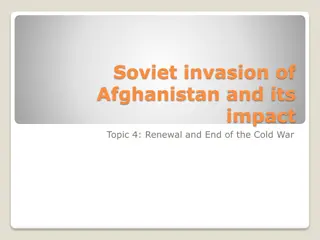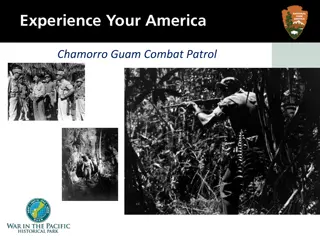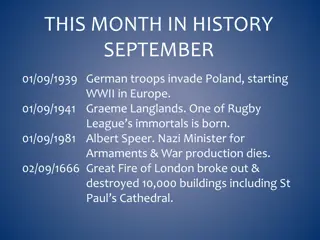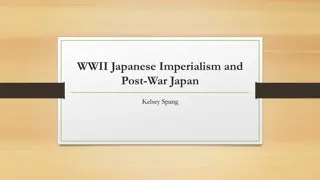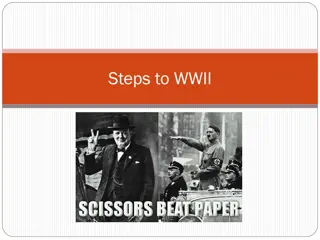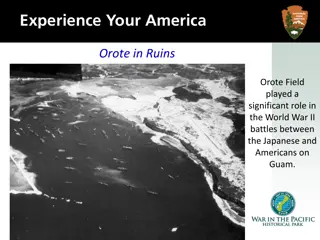The Invasion of Tinian - July 1944: A WWII Historical Account
The Invasion of Tinian in July 1944 was a crucial military operation during World War II. American forces, led by Major General Harry Schmidt, clashed with Japanese defenses on the island. The invasion involved intense pre-war bombardment, amphibious landings on multiple beaches, and strategic advancements by the Marines. By the end of the first day, thousands of Marines were ashore, and key locations like Mt. Maga were secured. This decisive battle marked a significant turning point in the Pacific theater of the war.
Download Presentation

Please find below an Image/Link to download the presentation.
The content on the website is provided AS IS for your information and personal use only. It may not be sold, licensed, or shared on other websites without obtaining consent from the author.If you encounter any issues during the download, it is possible that the publisher has removed the file from their server.
You are allowed to download the files provided on this website for personal or commercial use, subject to the condition that they are used lawfully. All files are the property of their respective owners.
The content on the website is provided AS IS for your information and personal use only. It may not be sold, licensed, or shared on other websites without obtaining consent from the author.
E N D
Presentation Transcript
The Invasion of Tinian July 24 to 1 August 1944
June 15 July 24 July 21 The Three Invasions
UDT Team 7 Reconnaissance Night of July 10-11
White Beach 1 Unai Babui White Beach 2 Unai Chulu
American Forces Major General Harry Schmidt, USMC Japanese Forces Colonel Kiyochi Ogata, Imperial Japanese Army 2nd Marine Division 4th Marine Division Amphibious tractor, motor transport, service, medical and Army artillery Total: 41,364 50th Infantry Regiment 56th Naval Guard Unit Naval construction, hospital, and air personnel Total: 9,162
Pre-invasion Bombardment 22 to 24 July
Jig Day: 24 July 1944, Initial feint to the southern beaches
Artillery firing from Saipan Air Support From aircraft carriers and Army Air Force P-47s flying from Isley Field on Saipan 155 mm howitzers lined up along the beach
0750 the marines landed simultaneously on both beaches
15,614 marines ashore by the end of the first day
The Marines achieved Mt. Maga that day and dug in about 1630 with emplacing machine guns, strung barbed wire in front of their positions, and cited artillery to the rear. About midnight the Japanese attacked with infantry and tanks. Marines firepower broke the Japanese attack. The Marines suffered 100 causalities and the battlefield was littered with 1,241 Japanese bodies in the morning. `
The first use of napalm A mixture of aluminum soap powder, oil, and gasoline that created a thick jelly that flows under pressure and sticks to a target as it burns.
Up the cliff on 31 July of Carolinas Plateau Island secured 1 August
Tinian transformed into two Twentieth Army Air Force Bases: North Field: 313th Bombardment Wing West Field: 58th Bombardment Wing
August 6, 1945: Hiroshima August 9, 1945: Nagasaki
Casualities United States Marines: Wounded Died Navy: Wounded Killed Japan 1,571 328 Killed Captured 5,542 252 245 63 Civilians Survivors 13,000 Last Japanese straggler, a civilian found 16 February 1950
Tinian Landing Beaches, Ushi Point and North Field National Historic Landmark Ushi Point Airfield Administration Building Atomic Bomb Loading Pit
Suicide Cliff Memorial Carolinas Shinto Shrine
San Jose Village Japanese police station
Dave Lotz, Cultural Resources program manager, War in the Pacific National Historical Park, Guam and American Memorial Park, Saipan david_lotz@nps.gov Questions & Comments
